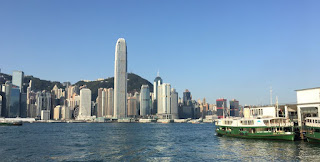Today, the Saturday in between Good Friday and Easter Sunday, my wife and I attended worship service at our church. We heard the choir sing that Jesus Christ died for me. We sang that Jesus suffered for our sins. Our pastor asked how much have we done to bring the good news of Christ’s salvation to other people.
These thoughts brought me back to my encounter with Mohammad Yunus two days ago. Our discussions entered around the enormous challenges of extreme poverty around the world, the assumption of selfishness of the prevailing economic system, the unwillingness of those in power to help, the glimmer of hope that some of us struggle to provide, the sense that we seem to be hoping against hope, …
I am convinced that Christianity provides the most accurate depiction of the predicament that the world is in. I have studied many of the major religions. Buddhism from India seems to teach that enlightenment will release us from the ignorance and misunderstanding that cause the problems. Daoism from China seems to say that understanding and following the way of nature (such as the nature of water) will lead us to the truth (and release from the world) that is Dao. Islam from Arabia seems to say complete submission to Allah is the way to heaven.
To me, Christianity seems to be the only religion that accords the evil of sin the seriousness that it deserves. The selfishness, hatred, violence, depravity and other evils that is so prevalent and deep-seated that death seems to provide the only, well-deserved, ending. And nothing that humans can do ourselves is weighty enough to save us from the certain death that we all face. God seems to be the only one who can pay that price to save us all.
Hence, to me, Christianity seems to be the only reasonable faith. It is, of course, only my own feeling, and I mean no disrespect to people who believe otherwise. But I shall do my best to share what I believe, because it is of utmost importance.
These are the thoughts that come to me between Good Friday, when Jesus died for our sins, and Easter Sunday, when Christ is risen to being us hope.


































